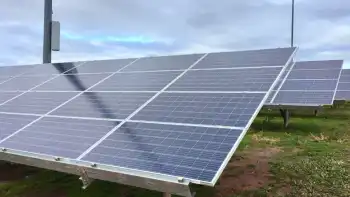Debating the merits of energy from air
SERIFOS, GREECE - The tiny Greek island of Serifos, a popular tourist destination, depends on its postcard views of sandy beaches, Cycladic homes and sunsets that blend sea and sky into a clean wash of color.
So when a mining and energy company floated a plan earlier this year to build 87 industrial wind turbines on more than a third of the island, the Serifos mayor, Angeliki Synodinou, called it her “worst nightmare.”
She imagined supersize wind towers looming over the island, destroying romantic vistas, their turbines chopping the quiet like a swarm of helicopters. The project is now stalled, and Ms. Synodinou doesn’t regret it. “No one would come here,” she said. “Our island would be destroyed.”
Supporters see modern wind turbines not as Don QuixoteÂ’s ferocious giants but as elegant symbols of a clean-energy future. But as the industry expands amid global pressure to cut carbon emissions and fight climate change, an increasingly mobilized anti-wind farm lobby in Europe, North America and elsewhere is decrying the turbines as ugly, noisy and destructive, especially for picturesque locales that rely on tourism.
“These are not just one or two turbines spinning majestically in the blue sky and billowing clouds,” said Lisa Linowes, executive director of Industrial Wind Action Group, an international advocacy group based in New Hampshire that opposes wind farms.
In Europe, home to 13 of the 20 biggest wind energy markets, the European Union wants to cut carbon emissions 20 percent by 2020. As a result, turbines are getting bigger, and “people are afraid that there will be these humongous wind parks that will block the sunset,” said Catalina Robledo, European wind energy analyst for Emerging Energy Research, based in Barcelona.
To ease worries, wind park developers are increasingly weighing the design of a high-productivity wind park against the costs of muting its effect on the landscape, Ms. Robledo said.
Some of the most vocal critics are in Britain, home to more than 150 wind-power projects. Wind farm opponents say the turbines in industrial farms are so big — from 90 to more than 125 yards in height — that they are inevitably intrusive.
“The eyes are constantly drawn to them,” said John Ferguson, a member of S.O.U.L. (or Save Our Unspoilt Landscape), a group opposing the nine-turbine Barmoor Wind Farm in the lush northeastern English county of Northumberland. Several wind farm developers are considering Northumberland, whose castles and national parks are a big tourist draw.
Dr. Ferguson said the turbines could well impinge on prehistoric sites, like the standing stones near HadrianÂ’s Wall. In order to indicate the size of the proposed turbines, S.O.U.L. has posted a Photoshopped image on its Web site of a wind turbine towering over the imposing Bamburgh Castle.
But wind farm advocates and industry leaders say tourism and turbines can mix. Alistair Danter, a wind energy supporter who runs the Edinbane Self-Catering Cottages on the Isle of Skye with his wife, Helen, says he believes clean-energy options such as turbines will respect the area’s tourism appeal. “There’s still a feeling that the west coast of Scotland offers something authentic and real,” he said, “and people don’t want to lose that.”
Supporters in Scotland point to the Kintyre Way, an 89-mile hiking trail on the western Scottish peninsula of Kintyre that includes the nine-turbine Deucheran Hill wind park and has views of others. One of those is the 1,680-acre, 46-turbine Beinn an Tuirc wind farm, developed by ScottishPower, where there is a nature preserve for black grouse, hares and a pair of golden eagles. “Wind parks can be elegant and inviting,” said Jason Ormiston, chief executive of Scottish Renewables, a Glasgow forum for sustainable energy.
Wind energy is far less evolved in Greece, where tourism accounts for about 16 percent of the countryÂ’s gross domestic product. Ioannis Tsipouridis, an engineer who heads the Hellenic Wind Energy Association, says the total wind-power capacity in Greece is now about 800 megawatts, far less than the 2,300 megawatts in Britain, the 12,800 megawatts in Spain and the 21,300 megawatts in Germany.
Greece relies heavily on burning brown coal, or lignite, which emits large amounts of carbon dioxide into the atmosphere. Scientists say Greece faces dire consequences from climate change and must adopt renewable energy sources. The tinderbox conditions that helped spread last summerÂ’s fires in the Peloponnesus were a result of drought and heat waves, which some experts say were caused by climate change.
“If the climate gets worse here, tourists will vanish and not come back,” said Nikos Charalambidis, director of Greenpeace Greece.
Mr. Tsipouridis estimates that about half of GreeceÂ’s wind energy is produced in Crete and in Evia, a large island in the Sporades that lost huge swaths of its lush forests in the August fires. The rest comes from northeastern Greece and the Peloponnesus. The 41-turbine wind park on Panachaiko Mountain near the northern Peloponnesian city of Patras has even become a much-photographed landmark, Mr. Tsipouridis said. And he said the noise from a wind park as close at 150 yards was about that of a normal office.
Powerful dry gales that churn the Aegean into a prime sailing area make islands there, such as Serifos, especially appealing locales for renewable energy investment. In Skyros, a low-key isle known for its diminutive Skyrian horse, the construction company EN.TE.KA has partnered with a local monastery to build between 70 and 85 turbines on a barren stretch in the islandÂ’s south owned by the Greek Orthodox Church. EN.TE.KAÂ’s managing director, Constantinos Philippidis, said the turbines were expected to bring in yearly revenues of at least 2.5 million euros (about $3.73 million) for the island.
“We hope to convince Skyrians that these turbines will help, not hurt, the island,” he said.
It wonÂ’t be easy; opponents started rallying against the proposed wind farm this past summer, arguing that the turbines are unsightly and noisy.
It’s an argument that irritates Mr. Tsipouridis of the Hellenic Wind Energy Association. “We’re living in the most polluted era of humanity,” he said, “and it’s sheer hypocrisy to spend so much time talking about wind turbines’ noise and aesthetics.”
Related News

Maine Governor calls for 100% renewable electricity
BANGOR - The winds of change have shifted and are blowing Northward, as Maine’s Governor, Janet T. Mills, has put forth an act establishing a Climate Council to guide the state’s consumption to 80% renewable electricity in 2030 and 100% by 2050. The act, LR 2478 (pdf), also sets a goal of reducing greenhouse gas emissions by 45% in 2030 and 80% by 2050. The document will be submitted to the state Legislature for consideration.
The commission would have the authority to direct investor owned transmission and distribution utilities to run competitive procurement processes, and enter into long-term contracts for capacity…




